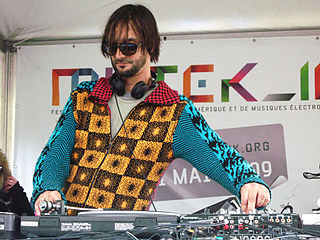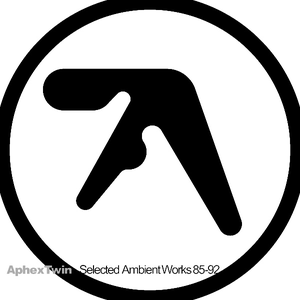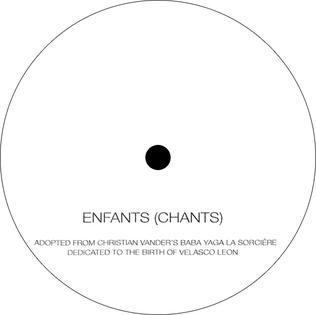Drum and bass is a genre of electronic dance music characterised by fast breakbeats with heavy bass and sub-bass lines, samples, and synthesizers. The genre grew out of the UK's rave scene in the 1990s.
Illbient is a genre of electronic music and an art movement that originated among hip hop-influenced artists from Williamsburg, New York City around 1994. DJ Olive, and DJ Spooky, pioneers of the genre, have both claimed to have coined the term. The word "illbient" combines the hip hop slang term "ill" and "ambient".
Jungle is a genre of dance music that developed out of the UK rave scene and sound system culture in the 1990s. Emerging from breakbeat hardcore, the style is characterised by rapid breakbeats, heavily syncopated percussive loops, samples, and synthesised effects, combined with the deep basslines, melodies, and vocal samples found in dub, reggae and dancehall, as well as hip hop and funk. Many producers frequently sampled the "Amen break" or other breakbeats from funk and jazz recordings. Jungle was a direct precursor to the drum and bass genre which emerged in the mid-1990s.
Ambient techno is a subgenre of techno that incorporates the atmospheric textures of ambient music with the rhythmic elements and production of techno. It was pioneered by 1990s electronic artists such as Aphex Twin, Carl Craig, the Black Dog, Pete Namlook and Biosphere.
Microhouse, buftech or sometimes just minimal, is a subgenre of house music strongly influenced by minimalism and 1990s techno.
Happy hardcore, also known as 4-beat or happycore, is a subgenre of hardcore dance music or "hard dance". It emerged both from the UK breakbeat hardcore rave scene, and Belgian, German and Dutch hardcore techno scenes in the early 1990s.

Selected Ambient Works Volume II is the second studio album by Aphex Twin, the pseudonym of British electronic musician Richard D. James. It was released by Warp in March 1994. Billed as a follow-up to James' debut Selected Ambient Works 85–92, the album differs in sound by being largely beatless ambient music. James claimed that it was inspired by lucid dreaming, and likened the music to "standing in a power station on acid."
Ambient house is a downtempo subgenre of house music that first emerged in the late 1980s, combining elements of acid house and ambient music. The genre developed in chill-out rooms and specialist clubs as part of the UK's dance music scene. It was most prominently pioneered by the Orb and the KLF, along with artists such as Global Communication, Irresistible Force, Youth, and 808 State. The term was used vaguely, and eventually fell out of favor as more specific subgenres were recognized.

Analogue Bubblebath, also released as Aphex Twin ep, is the first record by musician and producer Richard D. James. The EP was released under his alias The Aphex Twin through Mighty Force Records in September 1991. It was the inaugural release for the label, which at the time was a record shop in Exeter. The record was hugely influential on the development of electronic music, particularly techno and ambient techno. Its release has been described as a key event in the history of dance music. It is the first release in what became the Analogue Bubblebath series.
Darkcore is a genre of electronic dance music, considered to be a subgenre of breakbeat hardcore, which came out from the UK rave scene of the early 1990s; this genre in particular emerged from late 1992. It is recognised as being one of the direct precursors of the music genre now known as drum and bass.

Ricardo Villalobos is a Chilean-born German electronic music producer and DJ. He is well known for his work in the minimal techno and microhouse genres, and is one of the most significant figures in today's minimal techno scene.

Thé au Harem d'Archimède is the second studio album by Ricardo Villalobos. It was released by Perlon on LP and CD on October 12, 2004. The album's French title, which translates into English as "Tea in the Harem of Archimedes," is a reference to the Mehdi Charef film Tea in the Harem, as well as a mondegreen of the French phrase "Théorème d'Archimède," also the title of the album's fourth track.

The Young Punx are an English electronic dance music group whose eclectic and energetic style encompasses French house, breakbeat and drum and bass, mashed up with elements as diverse as 1980s pop, rock, disco and jazz.

E2-E4, released in 1984, is a solo recording by German musician and Ash Ra Tempel founder Manuel Göttsching. The album consists of one minimalistic, hour-long electronic track that Göttsching recorded in one take using a sequencer, with improvised keyboards, metallic percussion, and guitar playing.

Selected Ambient Works 85–92 is the debut studio album by Aphex Twin, the pseudonym of British electronic musician Richard D. James. It was released on 9 November 1992 through Apollo Records, a subsidiary of Belgian label R&S Records. The album consists of ambient techno tracks recorded onto cassette reputedly dating as far back as 1985, when James was thirteen to fourteen years old. Upon release it received widespread acclaim. It entered the Dance Albums Chart at No. 6 on 26 December 1992.

"Enfants" is a 2008 single by electronic music producer Ricardo Villalobos. Though 17 minutes in length, the A-side, "Enfants (Chants)", has been described as a "remarkably catchy, hype-inducing DJ tool" by Pitchfork Media, and as a "great tool for DJs" by electronic music magazine Resident Advisor, due to its minimal changes over the course of the entire song.
Electro house is a genre of electronic dance music characterized by heavy bass and a tempo around 128 beats per minute. The term has been used to describe the music of many DJ Mag Top 100 DJs, including Benny Benassi, Skrillex, Steve Aoki, and Deadmau5.

Dependent and Happy is the third studio album by Ricardo Villalobos. It was released by Perlon on LP and CD over three dates in August and September, 2012. The album is Villalobos' first solo studio album since 2004's Thé au Harem d'Archimède; several previous albums have either been DJ mixes, compilations or collaborations
"Dooms Night" is the debut single by German DJ and producer Azzido Da Bass, first released in 1999 in Germany. In the UK, the song missed the top 40 until a remix of the song by Timo Maas was released on 9 October 2000; it was this version which gave the song mainstream chart success, reaching number eight on the UK Singles Chart.
Belgian hardcore techno is an early style of hardcore techno that emerged from new beat as EBM and techno influences became more prevalent in this genre. This particular style has been described as an "apocalyptic, almost Wagnerian, bombastic techno", due to its use of dramatic orchestral stabs and menacing synth tones that set it apart from earlier forms of electronic dance music. It flourished in Belgium and influenced the sound of early hardcore from Netherlands, Germany, Italy, UK and North America during the early-1990s, as a part of the rave movement during that period.









